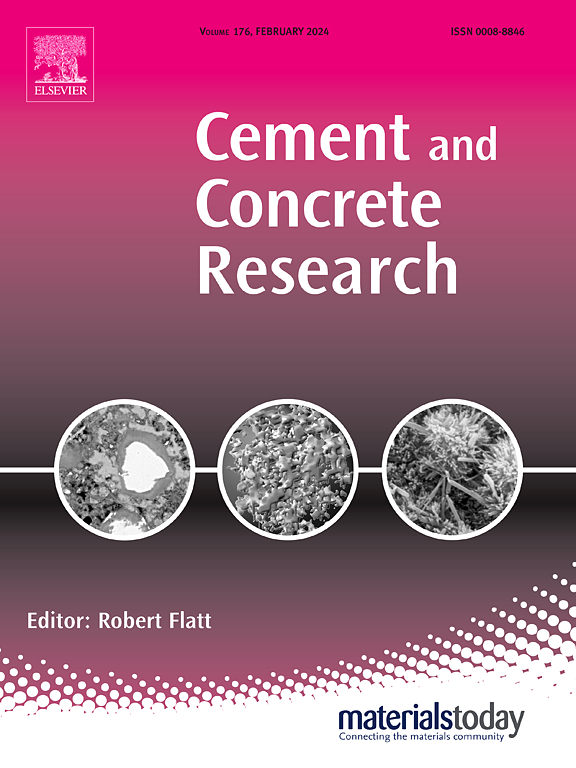玄武岩细粒的机械化学活化
IF 13.1
1区 工程技术
Q1 CONSTRUCTION & BUILDING TECHNOLOGY
引用次数: 0
摘要
玄武岩粉(BF)是一种很有前途的补充胶凝材料(SCMs)来源,因为它们在世界范围内可用,成本低,化学成分充足。但是,它们需要经过处理才能用作scm,否则它们是惰性的。我们探索机械化学活化(MCA),其中原材料暴露于高能研磨,这增加了粉末细度和无定形含量,从而激活它们作为scm使用。利用各种技术对高炉在MCA前后进行了表征。使用改进的R3试验测量反应性。反应活性随研磨时间和球粉比的增加而增加,超过一定的时间阈值,会发生超过惰性阈值的活化。x射线衍射显示粉末部分非晶化。电镜观察发现颗粒形成圆形,颗粒聚集和团聚。激光衍射显示为b-模态或三模态粒度分布。反应性与非晶化密切相关,而与增加的比表面积无关。本文章由计算机程序翻译,如有差异,请以英文原文为准。
Mechanochemical activation of basaltic fines
Basaltic fines (BF) are a promising source of supplementary cementitious materials (SCMs) due to their worldwide availability, low cost, and adequate chemistry. However, they need to be processed to be used as SCMs, as they are otherwise inert. We explore mechanochemical activation (MCA), where raw materials are exposed to high-energy grinding, which increases powder fineness and amorphous content, thus activating them for use as SCMs. BF were characterized before and after MCA using various techniques. Reactivity was measured using the modified R3 test. Reactivity increased with increasing grinding time and ball-to-powder ratio, and beyond certain thresholds of time, activation beyond an inert threshold occurred. Partial amorphization of the powders was evident from X-ray diffraction. Electron microscopy revealed the formation of rounded particles, and particle aggregation and agglomeration. Laser diffraction showed a b-modal or tri-modal particle size distribution. Reactivity was strongly correlated to the amorphization, but not to the increased specific surface area.
求助全文
通过发布文献求助,成功后即可免费获取论文全文。
去求助
来源期刊

Cement and Concrete Research
工程技术-材料科学:综合
CiteScore
20.90
自引率
12.30%
发文量
318
审稿时长
53 days
期刊介绍:
Cement and Concrete Research is dedicated to publishing top-notch research on the materials science and engineering of cement, cement composites, mortars, concrete, and related materials incorporating cement or other mineral binders. The journal prioritizes reporting significant findings in research on the properties and performance of cementitious materials. It also covers novel experimental techniques, the latest analytical and modeling methods, examination and diagnosis of actual cement and concrete structures, and the exploration of potential improvements in materials.
 求助内容:
求助内容: 应助结果提醒方式:
应助结果提醒方式:


